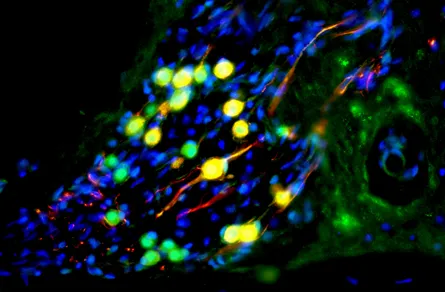- More than 2 years ago
Human embryonic stem cells can be directed to form sound-detecting nerve cells in the inner ears of deaf gerbils.

Deafness often results from the loss of specialized nerve cells — called hair cells and spiral ganglion neurons — in the cochlea, the part of the inner ear that converts vibrations into nerve signals the brain understands as sounds. Until now, no one has been able to replace both types of nerve cells.
Researchers at the University of Sheffield in England devised a way to make human embryonic stem cells follow the same steps that sound-detecting nerves take during normal development. When transplanted into the cochleas of deaf adult gerbils, the human cells partially restored the animals’ hearing, the researchers report online September 12 in Nature.
Such cells may one day be used in combination with cochlear implants to treat deafness in people.






